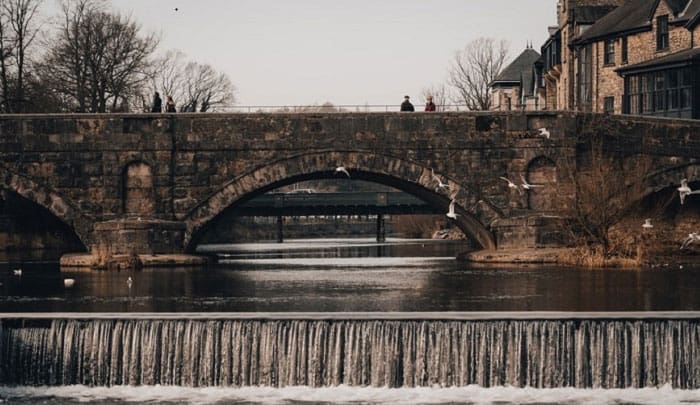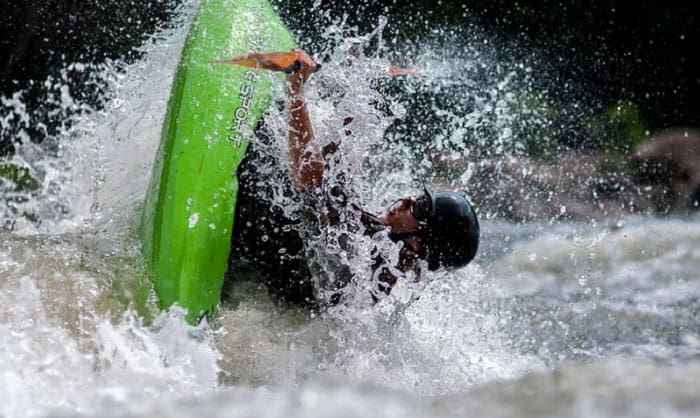You might have heard fellow boaters telling you against going near weirs, but did they give you an explanation as to why are low head dams dangerous to small boats and paddle craft?
I understand it can be exasperating when people tell you to avoid certain things but do not offer valid reasons.
Low-head dams are one of several landscape features boaters must avoid as much as possible. This article explores some of the reasons why these dams pose safety concerns to small boats and paddle craft and what you can do about it.
Table of Contents
What Are Weirs or Low Head Dams?
You will be correct to assume that a low-head dam (also called a weir) is similar to any other water barrier, differing only in height and principal uses.
Traditional dams are for power generation and flood control purposes. On the other hand, weirs are excellent for mill ponds, recreation, navigation, water supply, irrigation, hydropower, and water studies.
These artificial structures are present in many rivers and stream channels, stretching from one bank to the opposite side.
Water from one side of the weir flows over the low-head dam’s entire length. Low head dams can be one to fifteen feet tall, although some weirs are taller.
What Makes Them Dangerous to Paddle Craft and Small Boats?
According to Paul Schweiger of the Association of State Dam Safety Officials (ASDSO), about 50 people die yearly because of drowning accidents in low-head dams. The figure could be higher because of underreporting. It only highlights the dangerous nature of these water structures.
So, why are weirs dangerous to kayakers, small boats, canoers, and other watercraft enthusiasts?
1. Powerful boil, backwash, or reverse rollers
When upstream water flows over the top of the low-head dam, it hits the bottom of the structure and begins its ascent. The rising water meets the downward movement of oncoming water, creating sufficient hydraulic pressure to start a reverse roll.
It is like having a submerged hydraulic jump that pulls anything towards the base of the low-head dam. The boil or backwash, which is characteristic of low-head dams, creates a powerful suction that is almost impossible to get away from.
2. The ‘drowning machine’
I hate to disappoint you if you think you can escape a low head dam. The resulting reverse rollers or backwash are too powerful even for an experienced kayaker or boater. That is why experts and ordinary people call weirs the ‘drowning machine.’
A case in point, here is a dramatic video of a kayaker going over a low-head dam. At first, it would seem the paddler would escape the strong current.
You can see him paddling with all his might, only to overturn after several seconds of struggling. The video underscores a low-head dam’s immense power and how it can drown you in seconds.
3. Challenging to spot from upstream
Unlike conventional dams, weirs are tricky to spot coming from upstream. The low-head dam’s top section is often several inches to a few feet under the water’s surface. It would be easy to spot this structure in low water levels. It becomes impossible to see when the water level rises.
Complicating the issue is that most low-head dams across the US do not have markers to warn boaters and kayakers. You know you are in a weir if your small boat is already speeding towards a river section.
Can You Avoid Weirs?
Although spotting a low-head dam can be challenging, there are things you can do to avoid the ‘drowning machine.’
- First, you might want to cooperate with a local guide to teach you the locations of low-head dams in the river you intend to kayak on or paddle your boat. These people have excellent knowledge of their respective river systems. It would be best to listen to their advice.
- Second, look for tell-tale signs of low-head dams. Most weirs have concrete walls on river banks. If you see any of these structures, you can start paddling slowly towards the side.
- Third, avoid kayaking or boating right after a heavy downpour. The ‘drowning machine’ effects of low-head dams are more evident in high water levels. Hence, it would be best to keep yourself abreast of weather conditions.
- Fourth, be on the lookout for information and regulatory marks in the water. For example, you might see a red open diamond shape inside a red open square with the word ‘DAM’ in the center of the diamond.
- Lastly, always wear a personal floatation device when rafting or boating. Although it does not help you avoid getting into trouble with a low-head dam, PFDs can increase your survival if you get yourself in the ‘drowning machine.’
Conclusion
You now know the answer to the question, why are low head dams dangerous to small boats and paddle craft? These water structures create a boil or reverse roller almost impossible to escape from once you are in the ‘drowning machine.’
Looking for signs of low-head dams, wearing PFDs, learning weir locations, and rafting only in clear weather can help you enjoy a safe boating or kayaking trip in river systems.

Ten years of enjoying countless trips on boats never made me love them any less! So I am here to put all those experiences into good use for other boaters who want to have a safe and fun trip with their friends and families.



